Celebrities Influence Federal Drug Policy
June 20 2016
Now that we have some respected hollywood names joining in a positive conversation about America’s current drug policy. Tell us your thoughts or comments below.
June 20 2016
Now that we have some respected hollywood names joining in a positive conversation about America’s current drug policy. Tell us your thoughts or comments below.
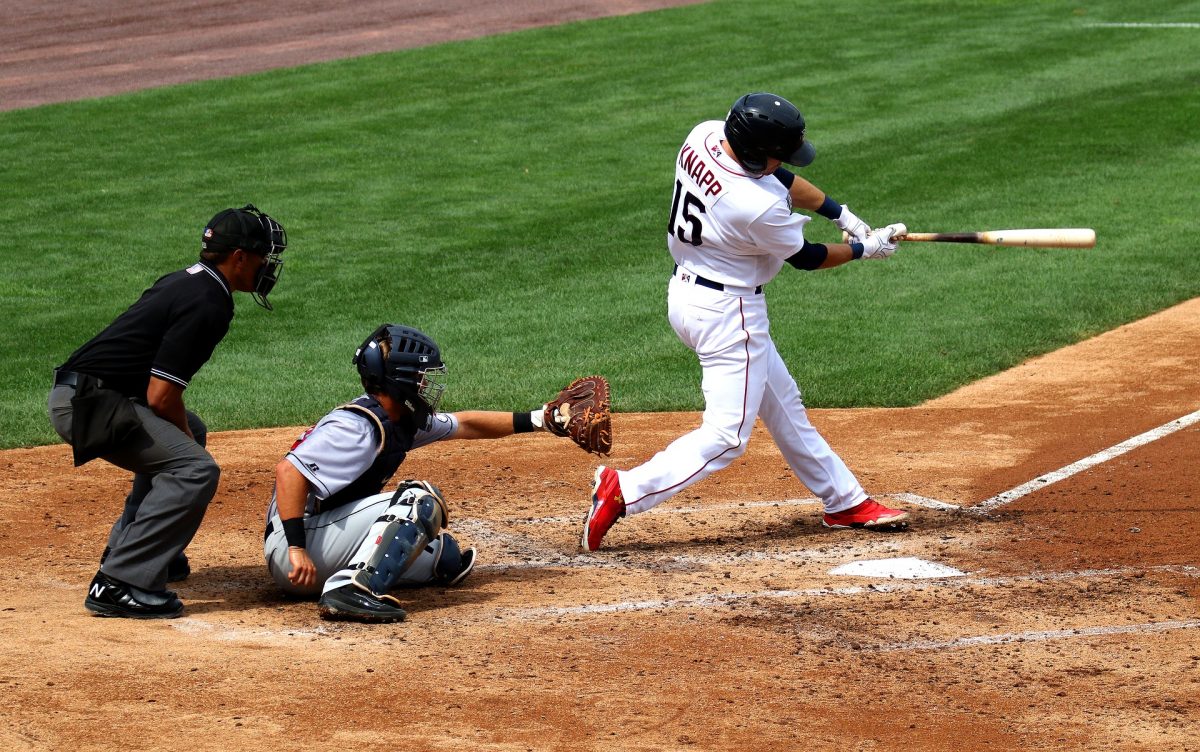
Danny Duffy has been in the MLB for 6 years with the Kansas City Royals, but this is the first year he has been called for 12 random drug tests… and it’s only July. The MLB has not made a comment about it yet but firmly stands behind its’ random drug testing policy.
He can’t help but think something is up and took to twitter to talk about the subject:
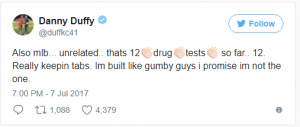
Duffy isn’t the first player questioning why they’ve been submitted to so many drug tests this year.Brewers slugger Eric Thames, who returned to the majors from Korea and has hit a plethora of dingers, wasn’t so sure the drug tests were as random as the league claims.
“I went the long way around to come back here. This whole thing is surprising me, as well. I really have no goals for this year. I wasn’t trying to break any records or set anything. I just wanted to apply what I learned in Korea to see how it would fare here. I’m shocked at all the results. I’m just here to play ball, and do my best to stay healthy, and stretch as much as I can. So, yeah, if people keep thinking I’m on stuff, I’ll be here every day. I have lots of blood and urine.” Thames said in an interview addressing the drug testing.
While the MLB can claim the tests are random, there is a difference between random drug testing, and drug testing under a “Reasonable Suspicion” claim. Accredited Drug Testing Offers “Reasonable Suspicion Training” for any supervisors or HR Managers that want to be able to test under reasonable suspicion, or send an employee to get a drug test when a supervisor believes they may be using or under the influence of drugs. Only companies that have at least one employee that have gone through Reasonable Suspicion Training are legally allowed to test for reasonable suspicion.
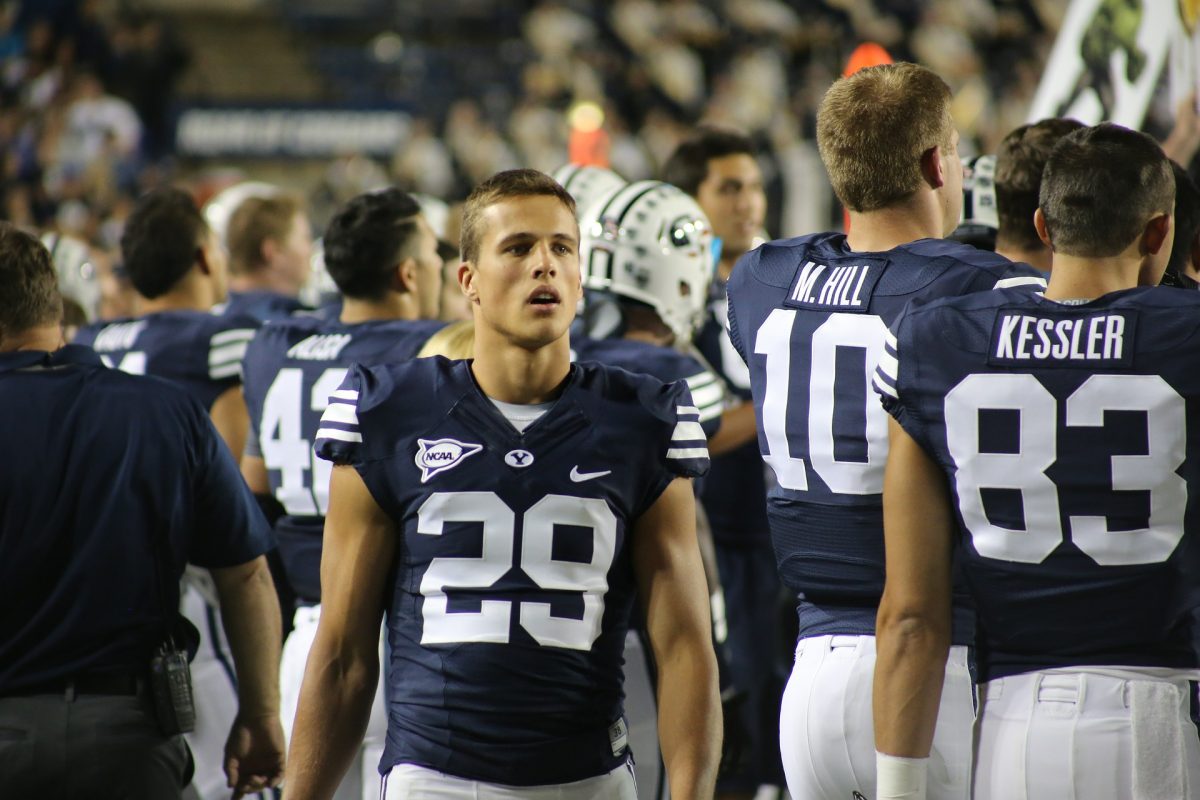
A private high school in Kentucky signed off on randomly drug testing their students on July 4th, this past week. The board at Trinity High School has been attempting to officially implement this for years with 2 years of testing under their belt.
Six hundred students were tested during their initial year of drug-testing, with 24 students (4 percent) testing positive. During the just-completed school year, they tested 800 students – with just 3 percent testing positive (24 students). While the rates are low, the school considers one positive test a test too high, and is doing everything they can to enforce their stance on drugs and binge drinking.
Including using a hair drug test, which can detect any drug use of up to 90 days prior. The standard in the industry is a urine 5 panel drug test, which can test for up to a week prior. Adopting a hair test as the random test of choice is very expensive, one test usually goes for $139.99. This price will be covered by the tuition the families are paying for their students to attend Trinity, at $13,700 a year when paid in full and the price goes up for payment plans.
When a student tests positive, their first reaction is not punitive. The school meets with the parent(s) and student, review the results and encourage them to use community counseling resources to interrupt this risky behavior. During this phase of drug testing, no school consequences occur. School counselors are available for support and guidance. If a student tests positive, he will be tested every 100 days until further notice. If he tests positive again school consequences begin. This has been rare so far.
Parents support the program because, the school says, they understand it empowers their kids to make better decisions. At parties or in unsupervised homes, teens often are pressured or forget good advice from parents, school and church. A parent told us “we hear frequently that it really does help in peer situations to be able to say, “I can’t. My school tests.””
Though Trinity wasn’t the first school to test in this area, several other schools have visited them to learn more and adopted their policy as their own.
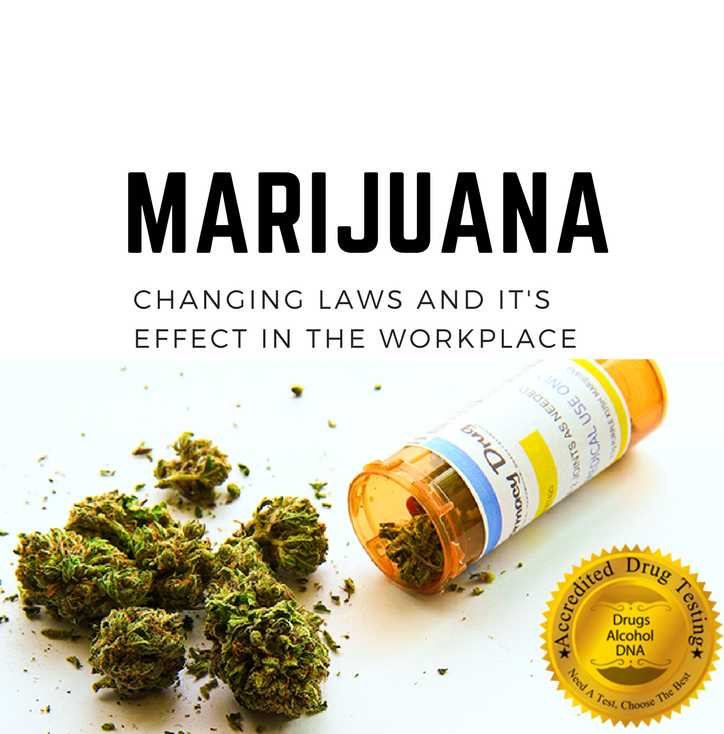
Medical and recreational use of marijuana has become a growing trend in America. It is an extremely hot topic and has become the center of many biased discussions among US politicians.
The use, possession, trade, cultivation, and transportation of marijuana is still illegal under federal law in the United States. Because of this, some states are have implemented their own regulations with regards to marijuana use.
1. Alaska
2. California
3. Colorado
4. Oregon
5.Massachusets
6. Nevada
7. Washington
| 1. Alaska | 2. Arizona | 3. Arkansas |
| 4. California | 5. Colorado | 6. Connecticut |
| 7. Delaware | 8. Florida | 9. Hawaii |
| 10. Illinois | 11. Maine | 12. Maryland |
| 13. Massachusetts | 14. Michigan | 15. Minnesota |
| 16. Montana | 17. Nevada | 18. New Hampshire |
| 19. New Jersey | 20. New Mexico | 21. New York |
| 22. North Dakota | 23. Oregon | 24. Pennsylvania |
| 25. Rhode Island | 26. Vermont | 27. Washington |
Cannabis is categorized under Schedule 1 substance under the Controlled Substance Act of 1970. It is because of this reason that cannabis remains illegal at the federal level.
While some point out advantages of marijuana use and its effectiveness treating medical issues, others point out the high-risk effects marijuana may have. Some proven effects of medical marijuana in the workplace include
1.Loss of productivity
2.Absenteeism
3.Increased risks of workplace injuries and accidents.
Scientists have confirmed cannabis really does make people lose motivation. Research has confirmed long-term use of the drug affects the dopamine levels in the brain. Dopamine, also known as the “happy” “feel-good” chemical of the brain is what inspires a person to get up and go. Levels of dopamine in a part of the brain called the striatum – found towards the side of the brain and involved in motivation – were lower in regular cannabis users. A recent study has suggested that individuals who have participated in long-term marijuana usage became more withdrawn, lethargic, and apathetic.
Cannabis contains at least 60 types of cannabinoids, chemical compounds that act on receptors throughout our brain. THC, or Tetrahydrocannabinol, is the chemical responsible for most of marijuanas effects, including the euphoric high. THC resembles another cannabinoid naturally produced in our brains, anandamide, which regulates our mood, sleep, memory, and appetite.
Marijuana impairs attentiveness, motor coordination, and reaction time. It also impacts the perception of time and speed. A study from the National Institute on Drug Abuse has found that marijuana negatively impacts driving performance, and other researchers have found that acute use of the drug increases the risk of crashes and fatal collisions. The drug has also been known to alter decision making, creating a disillusion of one’s morality, and knowing right from wrong.
The legality of medical marijuana in the workplace continues to be an endless debate. Although the medical, or recreational use of marijuana is legal- most workplaces are still upholding their Drug-Free Workplace Policies. The most common reason for this being the safety aspect of allowing the use of marijuana among employees, knowing the potential risks.Policy makers are developing new regulations to uphold company values while new state laws are put into effect.
If you are interested in becoming a Drug-Free Workplace or need help writing a Company Substance Abuse Policy, visit us at www.accrediteddrugtesting.net.
July 26 2016
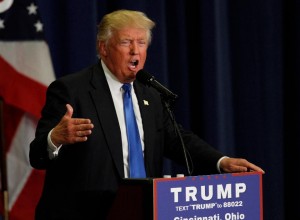
The last time the Democratic Party’s platform mentioned marijuana was in 1984, when it cited “25 million regular abusers of marijuana” and “15,000 tons of marijuana” entering the United States each year as “clear evidence that we are losing the effort overseas to control the production and transshipment of…dangerous drugs.” The draft for this year’s platform mentions marijuana half a dozen times, and the context is notably different:
We believe that the states should be laboratories of democracy on the issue of marijuana, and those states that want to decriminalize marijuana should be able to do so. We support policies that will allow more research on marijuana, as well as reforming our laws to allow legal marijuana businesses to exist without uncertainty. And we recognize our current marijuana laws have had an unacceptable disparate impact, with arrest rates for marijuana possession among African Americans far outstripping arrest rates among whites, despite similar usage rates.
Assuming something like that language is included in the final version of the platform, the Democrats, after three decades of silence on the subject, have gone from advocating an escalation of the war on weed to facilitating more tolerant approaches, including outright legalization. What’s more, every presidential candidate you are likely to see on your ballot this November agrees that states should be free to legalize marijuana—a remarkable development attributable not only to the landmark 2012 initiatives in Colorado and Washington but to a concomitant shift in public opinion nationwide.
Once you get beyond the question of how the federal government should respond to states that legalize marijuana, there are some notable differences on drug policy among the four parties with wide ballot access. Here is a summary of where they stand, arranged from least to most tolerant.
Unlike New Jersey Gov. Chris Christie, a former rival for the GOP nomination who is now a supporter and potential running mate, Donald Trump has never promised to stop marijuana legalization in its tracks. To the contrary, he says “that should be a state issue,” although he also says legalization is bad idea (albeit one he used to support, not only for marijuana but for other drugs as well).
Marijuana federalism aside, Trump sounds like an unreconstructed drug warrior. “I’m going to create borders,” he promises. “No drugs are coming in. We’re gonna build a wall. You know what I’m talking about. You have confidence in me. Believe me, I will solve the problem.”
That’s how most Republicans and many Democrats have been talking about drugs for as long as I can remember: If only we put our minds to it and spend enough money, we can stop the flow of drugs that threatens to turn us into a nation of dope fiends. A century of failure with this approach should have demonstrated its folly even to those unfamiliar with the economics of black markets.
On the question of how to treat Americans who manage to obtain arbitrarily proscribed intoxicants despite the best efforts of border-blocking drug warriors, Trump sounds at least as sympathetic as Richard Nixon. “The people that are in trouble, the people that are addicted, we’re going to work with them and try to make them better,” he says, “and we will make them better.”
Democratic Party
Hillary Clinton is down with “laboratories of democracy,” as long as the experiments involve cannabis. “I want to wait and see what the evidence is,” she says. Unlike Bernie Sanders, the Vermont senator who ran against her in the Democratic primaries, Clinton is not ready to repeal federal prohibition, although she thinks marijuana should be moved from Schedule I of the Controlled Substances Act to Schedule II, which she says will facilitate medical research.
Clinton’s promises regarding addiction treatment are at least as grandiose as Trump’s plan to stop drugs at the border. “There are 23 million Americans suffering from addiction,” she says. “But no one is untouched. We all have family and friends who are affected. We can’t afford to stay on the sidelines any longer—because when families are strong, America is strong. Through improved treatment, prevention, and training, we can end this quiet epidemic once and for all.”
Despite her compassionate pose and her support for sentencing reform, Clinton is not forswearing the use of force and violence to discourage drug use. When Clinton says “our state and federal prisons…are no substitute for proper treatment,” when she talks about “ensur[ing] every person suffering from addiction can obtain comprehensive treatment” and “prioritiz[ing] treatment over prison for low-level and nonviolent drug offenders,” what she has in mind is, at best, giving consumers of politically incorrect intoxicants a choice between a treatment slot and a jail cell.
Although Clinton’s addict estimate includes alcoholics, that is not a choice even the heaviest drinker has to confront unless he commits a crime. Drinking itself, unlike the use of illegal drugs, does not qualify. A corollary is that even casual drug users with no addiction to treat may still have to choose between treatment and jail if they happen to get caught.
Clinton does not bother to defend this blatantly unequal approach, because it is indefensible. It is therefore hard to take seriously her pose as an enlightened public servant who only wants to help “sick people that deserve to get well.” This medicalization of drug policy may take some of the rough edges off the war on drugs (or not), but only at the cost of denying the moral agency of drug users, which justifies the government’s shabby and often brutal treatment of them.
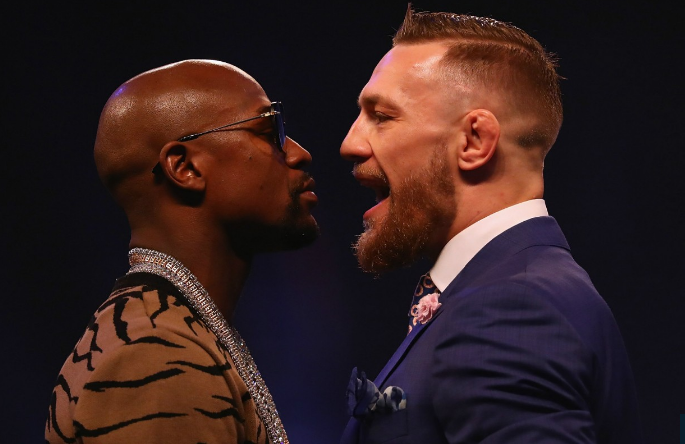
MMA Legend Conor Mcgregor and undefeated boxing legend Floyd Mayweather’s upcoming match will be one for the books on August 26th, 2017.
The athletes have done several press events to build anticipation for the fight, now dubbed “The Money Fight” being held in the T-Mobile Area in Las Vegas, Nevada. Where they face off and taunt each other with scare tactics.
But one thing both athletes have agreed on is being part of a USADA robust testing program. This program is very similar to the UFC Anti-Doping Program Mcgregor is still a part of. And while many are considering this fight a circus, the World Anti-Doping Agency (WADA) is insisting that this will be treated and regulated like all other boxing matches before it.
Mcgregor has yet to be tested under the USADA’s program but has been tested 5 times in 2017 under the UFC testing program and has consistently come up negative. Mayweather, on the other hand, had been tested twice this month under the new program but hasn’t been tested in over 2 years since his fight with Andre Berto in September 2015. Mayweather is coming out of retirement for the big “Money Fight” this month.
For Mayweather some are worried this month was a bit late to begin testing but officials are insistent the drug testing will be continuous moving forward.
“There is no maximum number of tests that can be performed and like our other programs, we will test robustly leading up to and during the fight in order to maximize deterrence and detection,” the spokesperson said. “Each athlete’s test history will be published on the USADA website and updated weekly.”
The testing is administered through the United States Anti-doping Agency (USADA) but has not been registered with the Nevada State Athletic Commission as of yet. The USADA and NSAC have had differences in the past which spelled trouble for Mayweather during his Pacquaio fight in 2o15.
For the latest in drug testing industry news and DOT news, check out the rest of our blog at accrediteddrugtesting.net
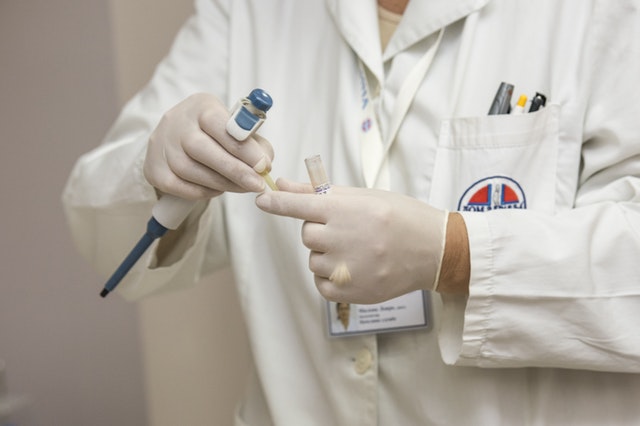
When it comes to drug testing, especially for employment purposes, we are constantly bombarded with detection periods for drug testing and how drugs come up positive. We are here to debunk any mystifying details about the entire process so the next time you are called for a test, you are prepared.
Most people don’t tend to dive deep on what makes a drug test positive or negative, they usually go into the test knowing whether they have passed or not simply be evaluating their personal drug use. But what if you have a prescription for painkillers or even have a Medical Marijuana Card? Then things can get a bit complicated. So let’s look at the process step-by-step from the beginning.
When getting scheduled for a drug test it is important to know that you will need to have a phone number on file that you can be reached at for reasons later on. But first, you will be scheduled for a drug test through Accredited Drug Testing by visiting our website (the one you are currently on) or by calling our national scheduling office at 1-800-221-4291.
Once you receive your donor pass you will proceed to the testing location at your earlier convenience (with Accredited Drug Testing you can even proceed the same day!). Once there you will take the test required (in certain cases urine, oral, or in others hair) and your end of the process is done from here on out.
After you take your drug test, your “sample” is then sent to a laboratory for testing. It is important to note that you will only come up positive for drugs that are included for testing in the test you took. For example, if you were sent to take a 5 Panel Urine Drug Test which only covers:
-Amphetamines
-Cocaine
-Marijuana
-MDA
-Opiates
-Phencyclidine (PCP)
You wouldn’t test positive for Oxycodone or Barbituates because your test doesn’t cover those panels. Even if you were actively taking those drugs. So as an employer it is important to know what exactly you are looking for in a drug testing so you are ordering the correct one for future candidates or randomly screening your current employees.
The test is then sent to a Medical Review Officer for a confirmation test. This test confirms the drugs found above the minimum levels required in your system. There are different levels for every drug and these levels are measured in nanograms for milliliter for urine and oral tests. These are considered the “cutoff levels”. A drug will not be found positive unless it meets that minimum level to be found in your system.
Cutoff levels for federally regulated drug testing programs (Department of Transportation for example) are established by mandatory guidelines set forth by the U.S. Department of Health and Human Services (HHS). Additionally, the U.S. Department of Transportation’s (DOT) rule 49 CFR Part 40 harmonizes with HHS and describes the required procedures for conducting drug and alcohol testing for the federally-regulated transportation industry. Many non-regulated employers mirror the cutoff levels established by the government.
For the latest and greatest in drug testing news, continue to check AccreditedDrugTesting.net for more!